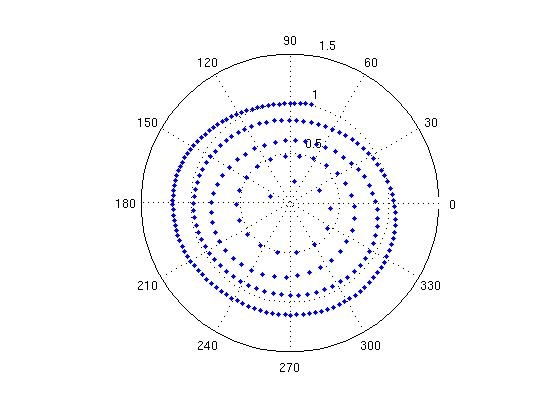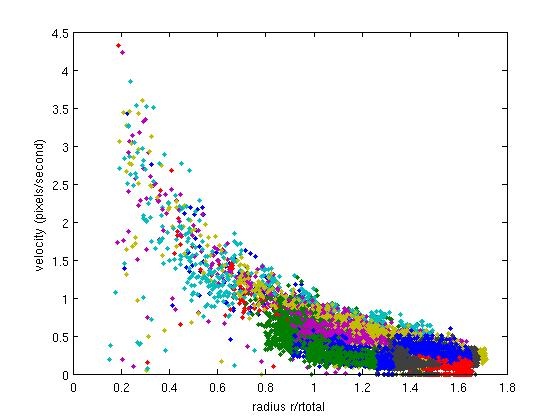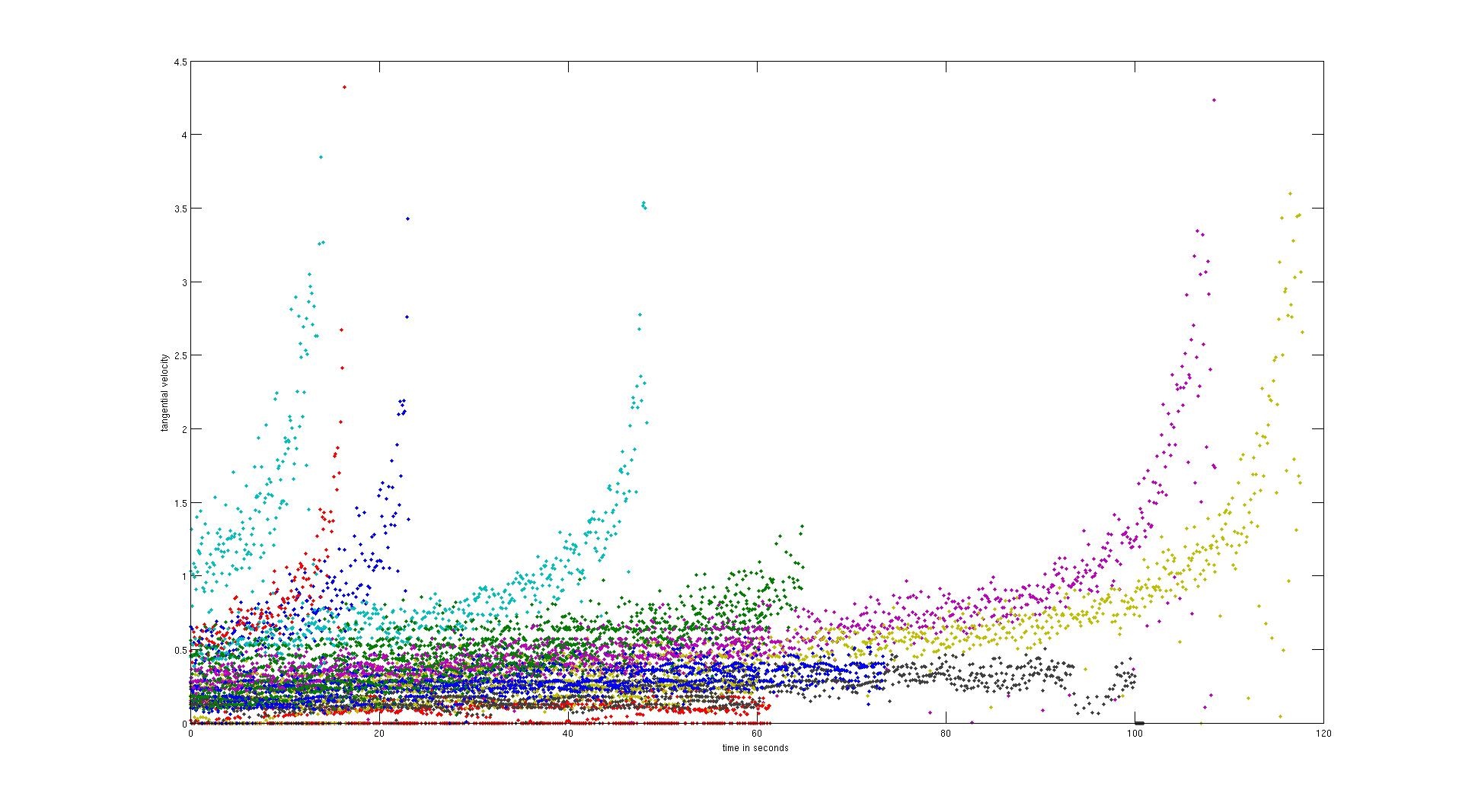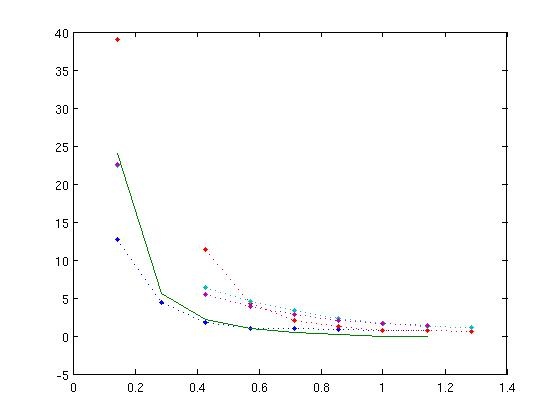These are the results of Kristin Berry's (kree@mit.edu) and Roman Kowch's (rkowch@mit.edu) 2010 Balanced Motion experiment. Feel free to email me us if you have any questions about our results or would like to obtain our data to analyze on for your own analysis.
Radial Inflow Experiment
...
Read about the general setup of our experiment
Data Analysis
This is an example of one of the particles we tracked and selected for analysis. Note that its radius steadily decreases as it spirals inward, as we would expect, but that its path appears to be slightly ellipsoidal and off center, which introduced error into our calculations.
looking at v vs r, we find that the particle's velocity increases as it gets closer to the center of the tank, as we would expect from conservation of angular momentum.
This shows basically the same thing, though less directly. As time goes on and particles move closer to the center of the tank, their velocities increase, consistent with conservation of angular momentum.
This was our first plot of theoretically predicted Rossby number with our experimental data. Note that the fit is terrible!
...
I thought it would be a fairly straightforward couple of sinusoidal oscillations (one for being off center, the other for the particle's paths actually being ellipsoidal) added onto the smooth r,t curve we'd expect, but Fourier-transforming this data resulted in hard-to-interpret gibberish.
Analysis of Hurricane Gustav
We decided to analyze hurricane Gustav using the scatterometer data found at the following sites:
Actually download the data here
It is actually important to select a hurricane that does not move too quickly because the data available for download is averaged over a whole day. This destroys a lot of otherwise beautiful candidates for study.
Selection of Hurricane Gustav
...
This is a graph of the Rossby number calculated for the paths we selected in hurricane Gustav. The solid line is the theoretical prediction. Again, when we computed the Rossby number using an unscaled raidusradius, the fit we got was terrible, so we scaled the hurricane's normalized radius by 0.75. It was actually kind of unclear how to define the radius of the hurricane in the first place, so this might not be entirely accurate.
If we look at a graph of observed wind, we see that the wind barbs, cross the isolines, indicating the presence of surface friction. Much like in the radial inflow experiment, this could explain the necessity of scaling our Rossby number.
...



